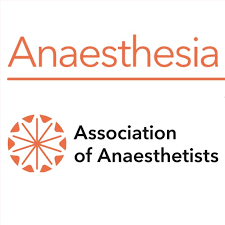Monitored anesthesia care linked to fewer complications
Editor's Note When compared to general anesthesia, the use of monitored anesthesia care in invasive procedures resulted in a decreased risk for advanced postoperative complications, according to the results of a new retrospective investigation published December 17 in Anesthesiology News. Investigators leading the single-center study found that this benefit for…
Major study clarifies risks, severity of perioperative pulmonary aspiration

Editor's Note Preliminary results from a nearly million-case review reveal that perioperative pulmonary aspiration, while feared, is rare but potentially deadly. According to a February 4 Anesthesiology News report, researchers found an overall incidence of 1 in 5,572 anesthesia cases, with aspiration-related mortality at about 1 in 67,000. As detailed…
Hidden head injury hazards expose cracks in OR safety culture

One of the most sobering moments in the career of anesthesiologist Cornelius Sullivan, MD, occurred not as a caretaker in the OR, but as a patient in the emergency department. Having been knocked out cold by a low-hanging monitor during a surgical procedure at Boston Children’s Hospital, he had to…
Partnership with Epic fuels ASA’s push for smarter, safer anesthesia

Editor's Note The American Society of Anesthesiologists (ASA) has partnered with Epic to launch the Anesthesia Community Registry (ACR), which is designed to enable easier data collection, benchmarking, and insight generation at scale. Powered by Epic’s new Community Registries platform, the ACR will complement ASA’s existing National Anesthesia Clinical Outcomes…
Study: Procedural sedation causes heat loss on par with general anesthesia in endoscopy patients

Editor's Note Research shows patients undergoing procedural sedation for endoscopic procedures experience significant and often undetected heat loss comparable to that seen during general anesthesia despite widespread assumptions that sedation preserves thermoregulation. Findings were published May 27 in The Journal of PeriAnesthesia Nursing. Conducted at a tertiary hospital in…
Subarachnoid spinal anesthesia offers safe, effective option for high-risk obstetric patients

Editor's Note Segmental spinal anesthesia (SSA) has emerged as a safe and effective anesthetic technique for high-risk obstetric patients, particularly those with underlying cardiovascular disease (CVD). A recent case series published on April 29 by Medical Dialogues highlights the successful use of SSA in five parturients undergoing cesarean sections, emphasizing…
Study: EEG-guided anesthesia halves anesthetic use, accelerates recovery in pediatric surgery

Editor's Note EEG-guided anesthesia reduces drug use and speeds recovery in children, according to an April 22 report in Neuroscience News. The article focuses on a clinical trial, conducted in Japan and published April 21 in JAMA Pediatrics, comparing standard anesthesia dosing with EEG-guided dosing in more than 170 surgical…
Study: GLP-1 drugs heighten risk of gastric residue but not perioperative pulmonary aspiration

Editor's Note Taking GLP-1 receptor agonists before anesthesia increases the risk of residual gastric contents, but evidence is lacking for a corresponding increase in perioperative pulmonary aspiration risk, according research published April 15 in the journal Anaesthesia. The systematic review and meta-analysis analyzed 28 observational studies involving over 466,000 patients…
Insights into spinal vs general anesthesia: Which comes out on top for same-day outpatient surgery?

Editor’s Note A growing body of research is shedding new light on the long-running debate about spinal anesthesia (SA) and general anesthesia (GA) in outpatient surgical settings, Outpatient Surgery Magazine March 12 reports. Recent studies suggest both approaches can be considered safe and effective, with the “best” choice often hinging…
Study: No significant link between GLP-1 drugs, postoperative aspiration pneumonia

Editor's Note Preoperative use of GLP-1 receptor agonists was not significantly associated with an increased risk of aspiration pneumonia or acute respiratory failure after surgery, according to a March 4 report in MedPage Today. The article focuses on a retrospective cohort study of over 366,000 surgical patients found no meaningful…

 Free Daily News
Free Daily News